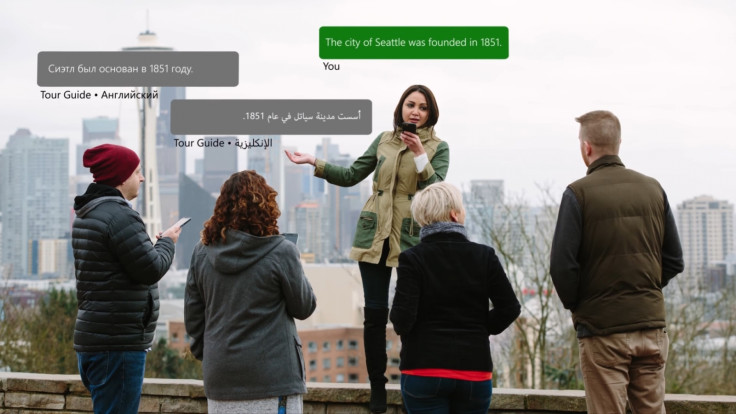Microsoft Translator now provides real-time translation for face-to-face conversations
The feature lets several people speaking different languages to hold a conversation in person.

Microsoft has released an update to its Translator smartphone app that lets users translate multi-lingual conversations in real time. The feature allows someone to listen to someone speaking in a foreign language and have the conversation pop up as text on their phone.
The promise of the app is that it will allow a group of people who speak different languages to hold a conversation in person, as well as make it easier for people visiting foreign countries to more easily overcome language barriers. In its promotional video, Microsoft also showed real time translation could help teachers communicate with multilingual students. Similarly, it showed how the feature could be used by a tour guide to address a group of tourists from various countries.
The feature is based on the same technology Microsoft used to bring real-time translation to Skype earlier in 2016. To use it, users open the Microsoft Translator app on their smartphone and select their language. The app then generates a QR code, which other people in the conversation scan into their devices.
When someone wants to speak they just tap an on-screen button, and others will see the conversation appear as text in their own language on their device. Microsoft Translator is available on Android, iOS and Windows mobile devices and can also be accessed through a dedicated website.
The feature needs to be connected to the internet in order to work as translation is powered by Microsoft's cloud-based deep neural networks, an advanced form of machine learning that functions similarly to the human brain. This allows speech to be translated in a more conversational manner, Microsoft explained.
"At the end of the day, our goal is breaking the language barrier," Olivier Fontana, director of product strategy for Microsoft Translator, said in a statement. "ls the quality perfect? No. Is the setup totally seamless? No. But really, once you get set up, you have a universal translator experience amongst multiple people talking in multiple languages."
While some companies have opted to create specialised devices offering real-time translation, Microsoft instead decided to capitalise on the wide distribution of smartphones already in circulation. The company noted that this would be the easiest way for people speaking different languages to overcome language barriers when they met face-to-face.
"Almost everyone has a smartphone on their person," said Tanvi Surti, the lead program manager on the Microsoft Translator team. "We spent a lot of time thinking about the set-up experience. Let's say you and I speak two different languages, how do we get connected quickly without spending too much time thinking about how to connect and spending more time in the conversation itself."
© Copyright IBTimes 2025. All rights reserved.






















